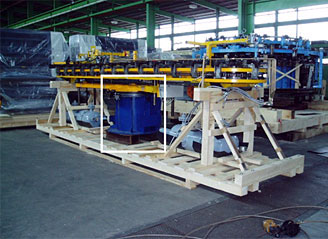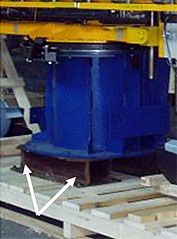To secure the packaged goods against slippage and tipping in the box/crate, they must be anchored to the floor of the box by means of a tight fit or friction securing. Tight-fit securing is provided by connecting the floor of the box or crate to the package with bolts. The bolts must pass through the longitudinal skids. The longitudinal skids may have to be arranged in such a way that this is rendered possible (see Figure 74). If the packaged goods do not allow bolting on the contact area with the floor, chocks must be used to secure the goods, and these must in turn be bolted to the longitudinal skids. In this event, additional securing is generally also necessary in the form of pressure blocks (friction securing) in order to prevent the goods from slipping upwards. One option is to use cut-lumber clamps with threaded rods which then pass through the longitudinal skids on the floor of the box in the same way as with bolted connections. The heads of the bolts must be recessed in the bottom of the longitudinal skids in order to avoid damage by the forks of a forklift truck. Appropriate plain washers must be used. 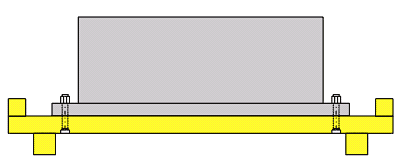
Figure 73: Schematic diagram of a tight fit achieved by screw jointing Example of how to secure packaged goods by bolting. The contact area of the packaged goods extends across virtually the entire width of the box/crate. The bolt connection also passes through the outer longitudinal skids.
Figure 74: Example of bolted joint The packaged item (shown in blue in Figure 74) is connected to the longitudinal skids as a tight fit by means of bolts. The longitudinal skids are arranged in such a way that the packaged item can be bolted to them (see end view): 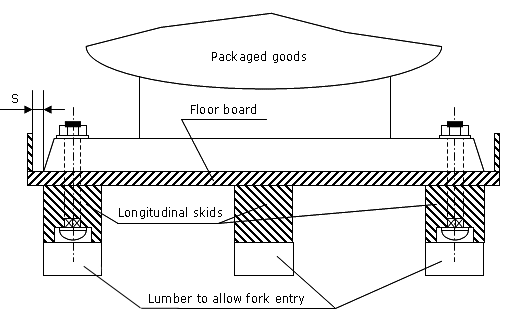
Figure 75: Example of securing packaged goods by bolting on a wide contact area 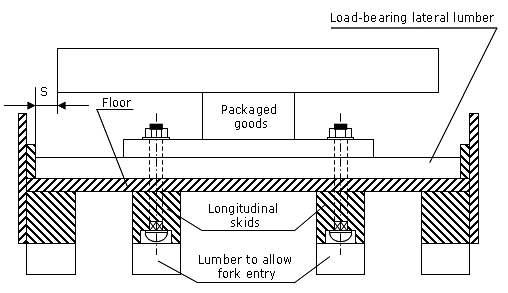
Figure 76: Example of securing packaged goods by bolting on a narrow contact area The contact area of the packaged goods is significantly smaller than the internal width of the box. The middle longitudinal skids are arranged in such a way that existing drilled holes in the stand of the packaged item can be used for bolting. Additional load-bearing lateral lumber has been placed under the points of contact of the packaged goods in order to distribute the load across all longitudinal skids. 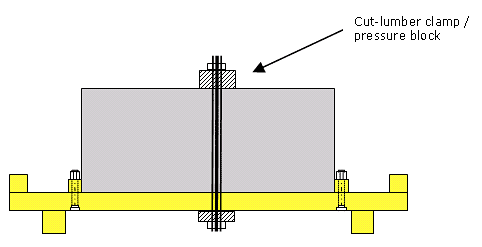
Figure 77: Schematic diagram – tight fit using chocks 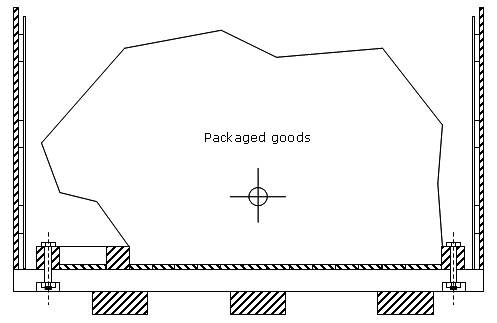
Figure 78: Example of tight-fit securing of packaged goods using chocks 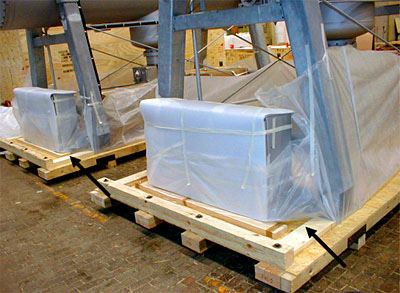
Figure 79: Packaged goods secured with chocks 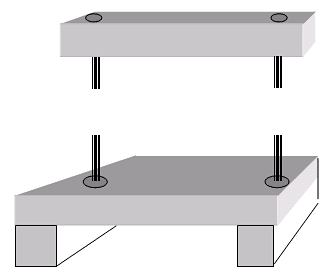
Figure 80: Schematic diagram – arrangement of a cut-lumber clamp on the floor of the box/crate. The threaded rods are connected through to the longitudinal skids on the floor. 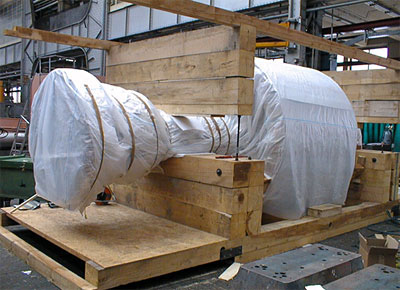
Figure 81: Securing heavy goods with a cut-lumber clamp |
| Top of pageContents |

